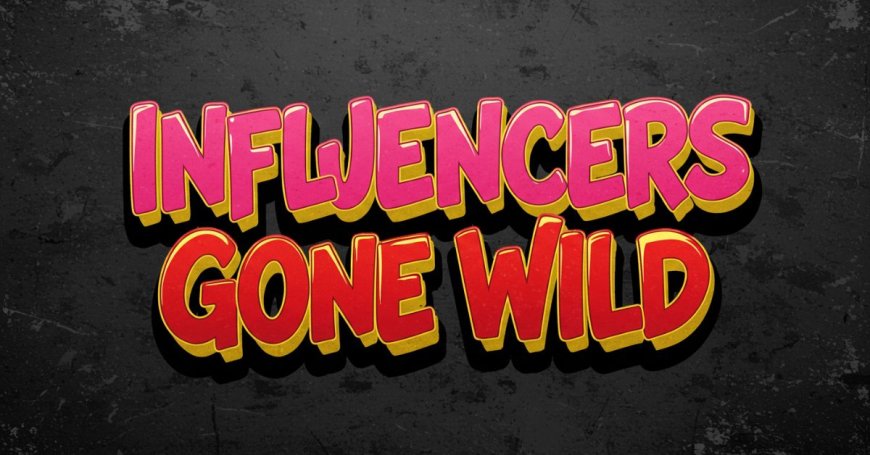The Fine Line Between Creative and Influencers Gone Wild

In todays digital age, where creativity is both currency and identity, influencers often push boundaries to stand out. But sometimes, what starts as innovation spirals into chaos and suddenly, the headline isnt about artistry but about an influencer who has gone wild.
So where exactly is the boundary between being creative and crossing the line? Why is it so easy to blur? And who decides when edgy becomes reckless? Lets explore the delicate dance between creative expression and controversy and why that line is getting harder to see.
The Digital Stage: Creativity Under Pressure
Social media platforms reward what stops the scroll: novelty, boldness, and originality. For influencers, this pressure often drives them to create bigger, louder, and more surprising content.
-
Experimenting with new formats and topics
-
Challenging social norms
-
Sharing raw, unfiltered emotions
This can lead to authentic and powerful content. But the same incentives can also tempt influencers to take bigger risks sometimes without fully weighing the consequences.
When Edgy Becomes Excessive
Creative risk-taking is part of what makes influencer culture exciting. But the difference between creative and wild often comes down to context, intention, and impact.
Creative:
-
Pushing boundaries to provoke thought or start dialogue.
-
Using humor or shock to highlight real issues.
-
Exploring taboo subjects with care and depth.
Gone Wild:
-
Seeking shock purely for engagement, without substance.
-
Ignoring potential harm to marginalized groups or audiences.
-
Acting impulsively out of frustration, burnout, or desperation for relevance.
Its not always black and white but often, you can see when an influencer stops asking, What am I trying to say? and starts asking, How do I keep people talking about me?
The Role of the Audience
The line between creativity and chaos doesnt just exist in the creators mind. Audiences shape it too.
-
When fans reward shock content with likes and shares, influencers learn to keep escalating.
-
When thoughtful, creative work gets less engagement, creators may feel forced to be more extreme.
-
Online discourse often flattens nuance branding an influencer as genius or problematic based on a single moment.
In effect, audiences help define what is celebrated as bold versus condemned as gone wild.
The Algorithm Effect
Algorithms further complicate the picture. They prioritize engagement over meaning, controversy over conversation. Influencers learn quickly that outrage often outperforms art.
-
A video that offends may get more views than one that educates.
-
Emotional rants and shocking stunts trend faster than thoughtful essays.
-
Platforms rarely penalize content until backlash becomes unavoidable.
So, the boundary between creativity and excess becomes less about ethics or purpose and more about what the algorithm will push next.
Creative Identity vs. Clicks
Many influencers start with a clear creative mission: to teach, entertain, or inspire. But the endless cycle of content creation can warp that mission.
Signs an influencer is crossing the line:
-
Content feels reactive, not reflective.
-
Increasingly relies on controversy to stay relevant.
-
Ignores criticism or doubles down on harmful jokes.
-
Prioritizes virality over personal or community values.
In these moments, creativity becomes performance not for expression, but purely for attention.
Why the Line Keeps Moving
Digital culture evolves quickly. What was edgy five years ago might feel tame now. Conversely, new social awareness means jokes or stunts once ignored now spark rightful outrage.
This shifting landscape makes it hard for influencers to predict what will cross the line and harder still to stop once the cycle of shock content begins.
Can Influencers Find Balance?
Some do. Creators who thrive long-term often:
-
Stay true to a clear creative purpose.
-
Listen to audience feedback, especially from affected communities.
-
Accept that not every post needs to go viral.
-
Take breaks to reflect rather than react.
They embrace risk and boldness but remain mindful of why they create, not just what will trend.
Conclusion: Its Complicated And Human
The fine line between creative and influencers gone wild isnt drawn in stone. It shifts with context, audience, platform dynamics, and cultural awareness. And sometimes, even the most thoughtful creators can step over it.
But understanding why the line exists and why its so tempting to cross helps everyone: influencers trying to stay authentic, audiences deciding what to support, and platforms rethinking what they amplify.
At its best, creativity disrupts, questions, and connects. But when it turns into reckless spectacle, everyone loses including the creator. Recognizing that difference isnt easy but its necessary if we want an online world that values meaning as much as momentum.









































